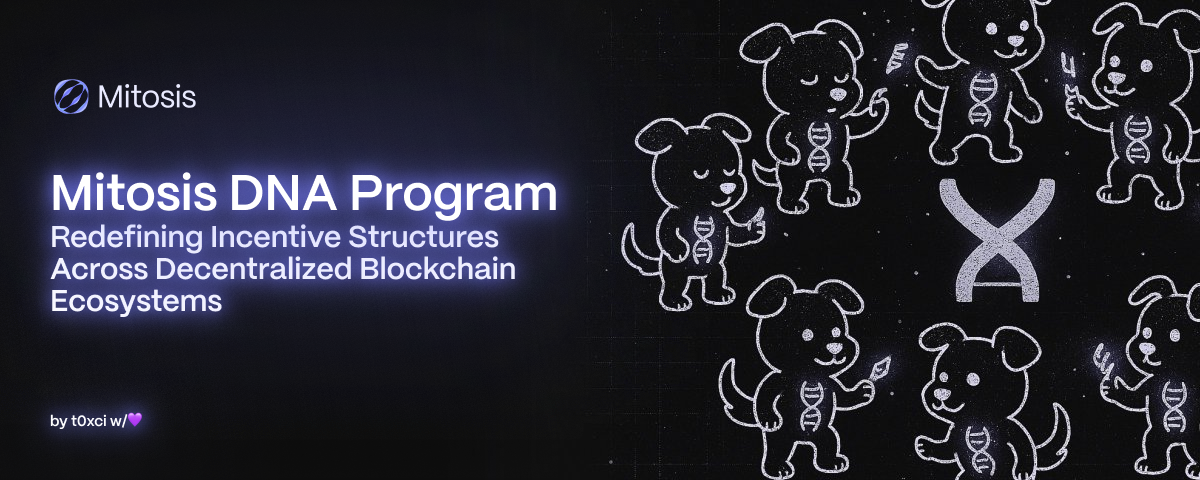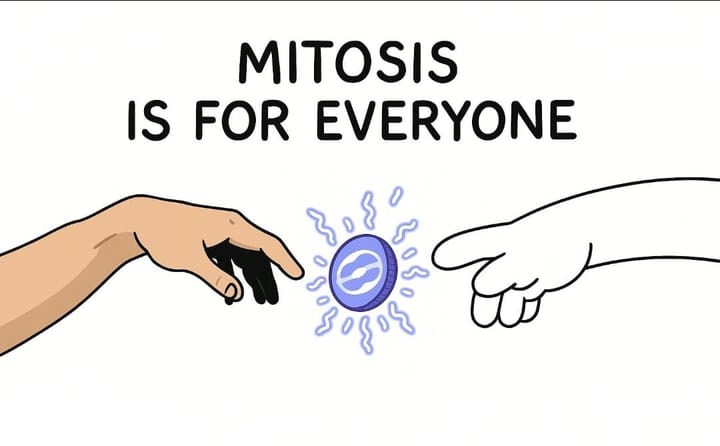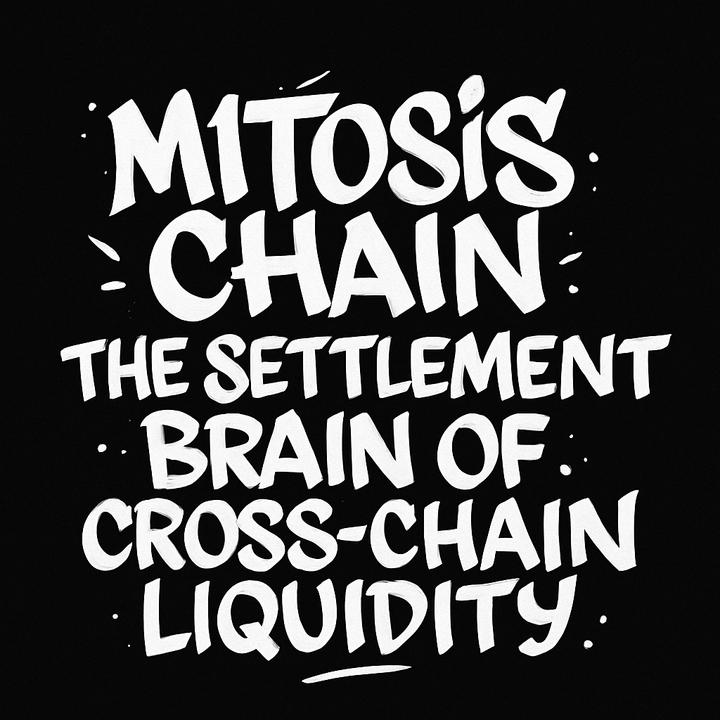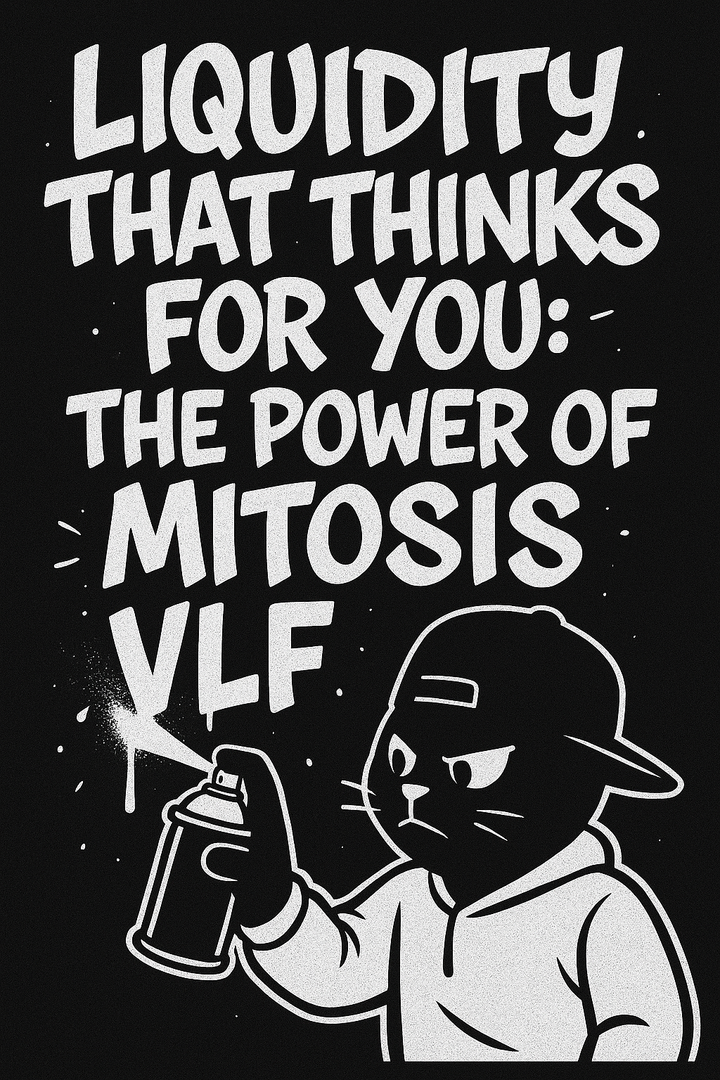Mitosis DNA Program - A Revolutionary Approach to Incentives in Blockchain Ecosystems

The Challenge of Incentives in Blockchains
Blockchain technology holds the promise of decentralization and transparency, but its success hinges on aligning the interests of all participants. While many projects start with immense enthusiasm, they often lose momentum over time. The root cause lies in inadequate incentive structures.
"Most projects fall into central planning problems where foundations arbitrarily decide resource allocation or formula flaws where rigid mathematics can't adapt to changing conditions."
This leads to a conflict between:
- Users seeking the highest APY without platform loyalty.
- Validators who secure the network but don't prioritize application development.
- Developers working in isolation without adequate support.
- Liquidity providers who lack influence over resource allocation.
This "four-way tug-of-war" fosters short-term thinking, detrimental to the long-term health of the ecosystem.
The Mitosis Solution: The DNA Program
The DNA (Operations and Rewards Strategic Engagement) program by Mitosis offers a novel approach. It establishes a system where everyone's success is dependent on the success of others.
"The DNA program creates a web of aligned incentives where rewards flow based on actual value creation, long-term participants gain increasing influence over ecosystem direction, governance becomes immune to common attack vectors, and each stakeholder group directly benefits from others success."
Key principles of the program:
- Incentive interdependence: Rewards are based on the real value created by participants.
- Long-term participation: Greater influence for those who remain in the ecosystem longer.
- Resilient governance: Protection against attacks thanks to a unique tokenomics design.
- Mutual benefit: Each group benefits directly from the success of others.
The Three-Token System
The DNA program's tokenomics are built upon three distinct tokens:
- MITO (Utility Token): The "fuel" for transactions on the Mitosis Chain, can be staked to validators, freely transferable for DeFi activities.
- gMITO (Governance Token): Earned by staking MITO, grants voting rights in ecosystem governance, and is non-transferable.
- LMITO (Locked MITO): Gradually unlocks over time, converting to MITO, accelerates with governance participation, and is non-transferable until unlocked.

This system balances short-term and long-term goals, which is critical for ecosystem stability.
Rewards Distribution
DNA directs rewards to where they generate the most value:
- Vault Reward Pool: Liquidity vaults that bring external assets into the ecosystem. gMITO holders vote on reward allocation between vaults, creating a positive cycle: more rewards -> more liquidity -> more value.
- dApp Reward Pool: Encourages application developers on Mitosis. This pool has two channels:
- Max Pool: Automatic rewards based on MITO usage in the application.
- Vote Pool: gMITO holders vote to support promising projects.

This mix of mathematical algorithms and flexible governance ensures a balanced resource allocation.
DNA Governance
The DNA governance system addresses issues common in many DAOs:
- Time-weighted voting: The longer you participate, the greater your influence.
- "One gMITO – one vote" principle: No privileged groups.
- Non-transferability of gMITO: Protection against attacks and vote-buying.
gMITO holders control economic parameters, such as revenue distribution and fee setting.
Development Stages
The DNA program evolves in stages:
- Phase 1: Foundation. Establishing the Mitosis Chain, accumulating gMITO, key decisions made by the Mitosis Foundation.
- Phase 2: Community Control. Full deployment of LMITO, gMITO holders manage voting.
Benefits for Stakeholders
- Users: Opportunity to earn double rewards, active participation in governance, access to DeFi solutions.
- Validators: Commissions in gMITO, influence on network development, ability to allocate resources to increase network value.
- dApp Developers: Stable funding based on MITO integration, community support through voting, trust through project validation.
- Vault Projects: Priority access to rewards, partnerships with other protocols, and customized parameters through governance.
Why DNA Works
Most incentive programs fail due to rigid formulas or short-sightedness. DNA provides:
- Rewards with time-based locking and acceleration for governance participation.
- Balance between short-term and long-term needs of different groups.
- Flexible management that adapts to market changes.
"The Mitosis DNA Program is not just another incentive system; it is a comprehensive rethinking of how blockchain ecosystems should function."

Technical Analysis: Key Implementation Features
A key aspect of the DNA program's success is its underlying technological infrastructure. Let's examine some features in more detail:
- Consensus Algorithms: Mitosis utilizes a modified Proof-of-Stake (PoS) consensus algorithm, allowing validators to not only confirm transactions but also actively participate in ecosystem governance. This ensures greater decentralization and validator involvement in the success of projects developed on the platform.
- Smart Contracts: All reward distribution, governance, and voting mechanisms are implemented using smart contracts. This ensures process transparency and automation, reducing the potential for abuse and errors.
- Attack Protection Mechanisms: Because gMITO is a non-transferable token, the system is resistant to Sybil attacks, where malicious actors attempt to gain control over governance by creating numerous fake accounts.
- Interoperability: Mitosis is designed with interoperability with other blockchains in mind. This will allow users to easily move assets between different platforms and use them in various DeFi applications.
Conclusion
The Mitosis DNA program offers a comprehensive solution for building sustainable blockchain systems with mutual benefits for all participants. With its innovative tokenomics and thoughtful governance, it creates the conditions for long-term network development without conflicts between users, validators, developers, and liquidity providers. This approach could become a model for future blockchain projects.
Prospects and Risks
The DNA program looks promising, but risks exist:
- Need to adapt to changing market conditions.
- Risks related to DAO management and resource allocation.
- Potential smart contract vulnerabilities.
Despite this, DNA demonstrates a new approach to incentives in blockchain ecosystems that deserves attention.
Future Implications and Scalability
Beyond its immediate benefits, the Mitosis DNA program offers valuable lessons for future blockchain development. Its success highlights the need for:
- Dynamic incentive models: Blockchain ecosystems are constantly evolving, so incentive programs must be flexible and adaptable.
- Community-driven governance: Giving users a real voice in decision-making fosters a sense of ownership and encourages long-term participation.
- Robust security: Protecting against attacks and vulnerabilities is crucial for maintaining trust in the ecosystem.
As blockchain technology continues to mature, the Mitosis DNA program provides a compelling example of how to build sustainable and thriving decentralized communities.
The architectural design and the strategic implementation of the tokenomics in Mitosis' DNA program can be a game changer for blockchain adoption. There are however a couple points that must be considered for the long term viability of the project.
- Regulatory Compliance One of the first things any blockchain based project must consider is the regulatory compliance in the jurisdictions they wish to operate in. Because blockchain and cryptocurrencies are very new regulatory frameworks are still being put in place to govern these projects. It is important for Mitosis to stay abreast of the changes in regulations and ensure the project remains compliant.
- Community Growth and Education The long term success of the Mitosis project depends a lot on the growth of its community. Community growth cannot come at the expense of education as without proper education the ecosystem would not achieve its full potential.
By focusing on education and regulatory compliance in the ecosystem Mitosis can build a great community and project that weathers the test of time.



Comments ()